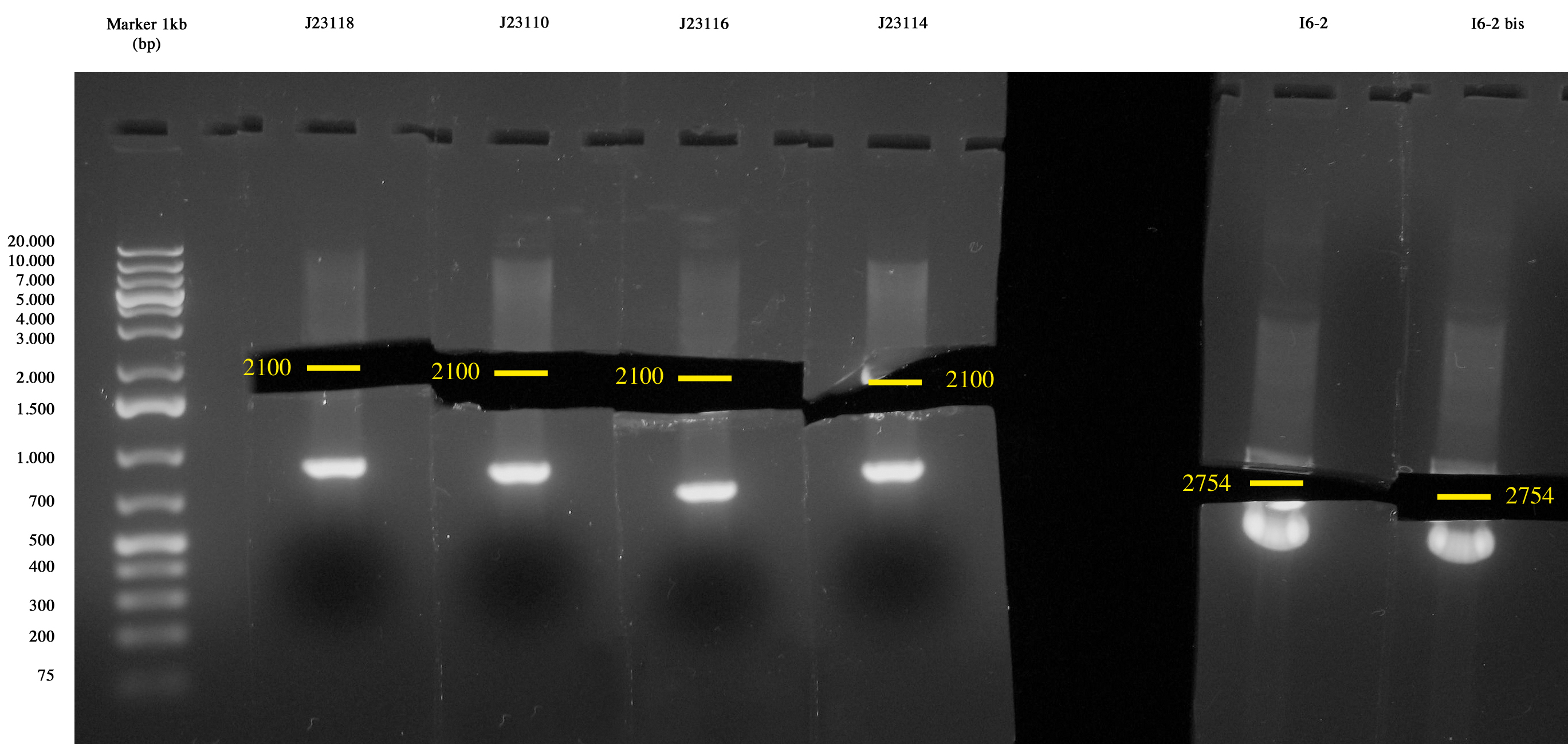Team:UNIPV-Pavia/Calendar/June/settimana4
From 2010.igem.org
(→June, 28th) |
(→June, 28th) |
||
| Line 200: | Line 200: | ||
|} | |} | ||
| - | |||
==June, 29th== | ==June, 29th== | ||
Revision as of 10:00, 5 July 2010
|
|
|||||||||||||||||||||||||||||||||||||||||||||||||||||||||||||||||||||||||||||||||||||||||||||||||||||||||||||||||||||||||||||||||||||||||||||||||||||||||||||||||||||||||||||||
|
Digestion of:
Digestions were incubated at 37°C for 3 hours, gel run and gel-extracted. Ligations were performed ON at 16°C:
NanoDrop quantifications were not reliable, so every ligation was performed with 3ul of vector, 2ul of insert, 3ul of ddH20, 1ul of T4 ligase and 1ul of T4 ligase buffer. These four promoters from Andersone Promoters Collection were choosed for their strength, measured in Arbitrary Units:
Soon quantitative tests will be performed to quantify each promoter's strength in terms of RPU. Today we received 2 stabs from registry HQ for <partinfo>BBa_K208001</partinfo> (one for each registry loation of this part),the Silver-fusion compatible BioBrick part that codes for phasin. This part is in a pSB3K3 plasmid is in E. coli ??? . Cultures were straked on LB+Kan (50 ug/ml) agar plates. Cultures were named PhaP-1 and PhaP-2. Plates were incubated ON at 37°C. June, 24thPhaP-1 and PhaP-2 plates showed colonies!! A colony from each plate was peaked and used to infect 1ml LB+Kan. Liquid cultures of PhaP-1 and PhaP-2 were grown for 6 hours at 37°C 220 rpm and then used to prepare glycerol stocks. Remaining liquid cultures were re-filled with 5 ml LB+Kan an grown ON at 37°C 220 rpm for tomorrow MiniPrep. Glycerol stocks of PhaP-1 and PhaP-2 are stored at -80°C in the iGEM 2010 Registry box. Ligations were heated at 65°C for 5 minutes to inactivate ligase ad then tranformed in E. coli TOP10 home made competent cells. Plates were incubated ON at 37°C (we decided to incubate plates 5 hours longer than usual, because cell grotwh was already slower for I6). June, 25thAll plates showed colonies after 19 hours at 37°C!!
These results are encouraging, because they are consistent with our expectations: ligations provide a high metabolic burden to the cell, so growth is slower. Positive green colonies are smaller and not surrounded by satellite colonies. Negative colonies are bigger and surrounded by satellite colonies, confirmingthat they had a faster growth than our ligations! 2 colonies from each plate were peaked and incubated in 1ml LB+Amp.
PhaP-1 and PhaP-2 cultures were grown. MiniPre was performed, with the following NanoDrop quantifications:
DNA quantification was poor, so we decided to perform digestion screening and to repeat Miniprep next week for sequencing. Digestion of:
Digestion eas performed for 2 hours at 37°C. DNA was then gel run for screening. Both cultures were positives! Sequencing will be performed next week!
June, 28thInoculum from glycerol stock for I7-1, I7-2, I8-1, I8-2, I9-1, I9-2, I10-1 and I10-2 in 5ml LB+Amp. Cultures were gown ON at 37°C 220rpm. Inoculum of PhaP-1 and PhaP-2 in 5ml LB+Kan and ON growth at 37°C 220rpm. We received strains and plasmid from ???Yale University???
June, 29thJune, 30thJuly, 1stJuly, 2ndJuly, 5th |
|
|||||||||||||||||||||||||||||||||||||||||||||||||||||||||||||||||||||||||||||||||||||||||||||||||||||||||||||||||||||||||||||||||||||||||||||||||||||||||||||||||||||||||||||
</td>
 "
"


